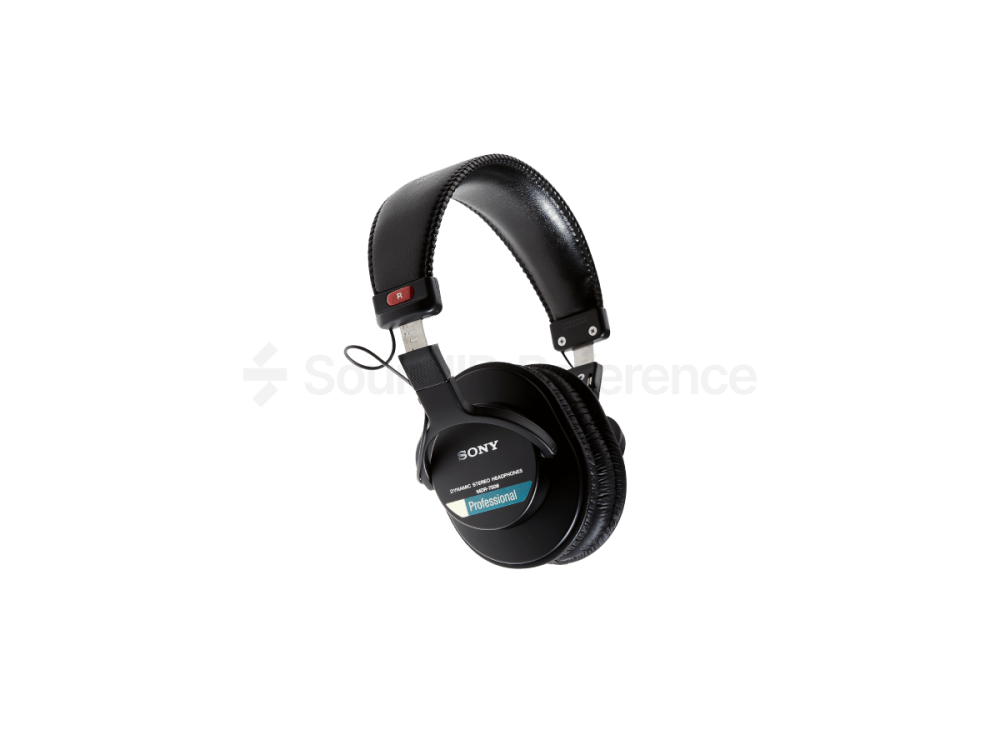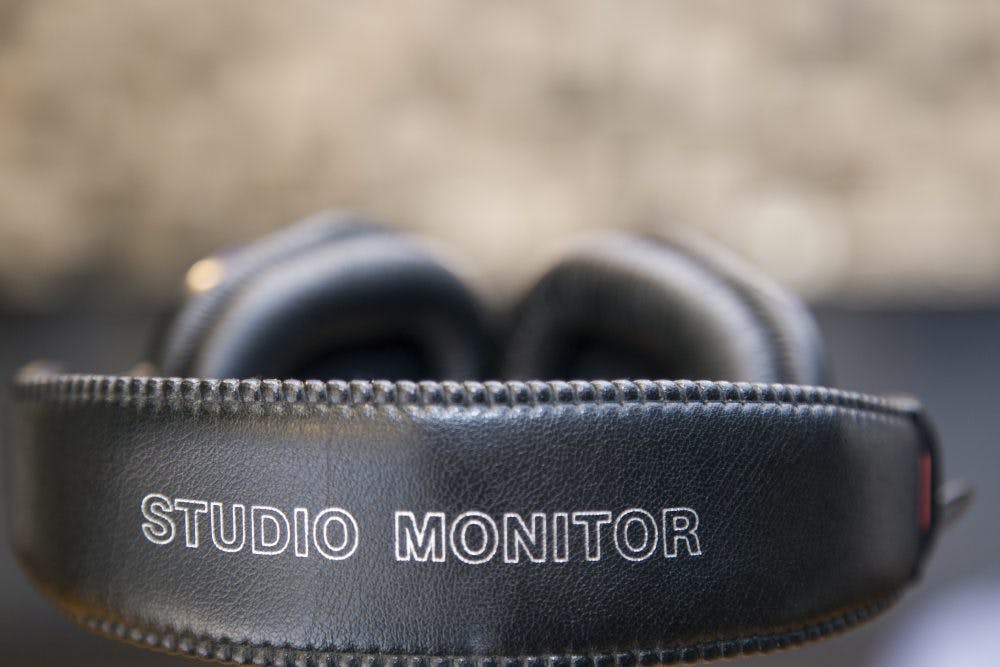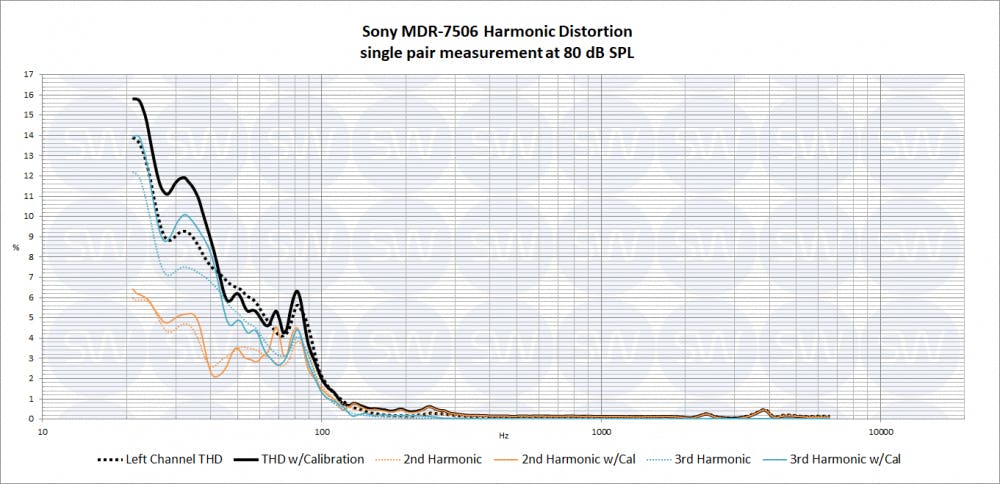The Sony MDR-7506 has been around for ages. The model officially celebrated its 30th birthday back in 2021, but the design traces even further back to the MDR-V6—meaning these headphones are now pushing nearly four decades of continuous use. What’s remarkable isn’t just their longevity but their enduring popularity: the MDR-7506 remains one of the best-selling professional studio headphones worldwide.
But in 2025, producers and engineers are asking different questions: How does a 1990s design hold up in today’s DAWs and SoundID Reference workflows? Can they still deliver reliable translation in hybrid mixing setups where headphones and monitors are used interchangeably? What about long-term durability, the cost of replacing worn pads, or even modding the fixed cable? And perhaps most importantly, how do they compare to newer competitors like the Beyerdynamic DT 240 Pro or budget studio workhorses released in the last five years?
This review takes a hard look at the MDR-7506 through a modern lens—examining integration with calibration software, practical upgrades for long-term reliability, and their role in 2025 production environments. If you’re considering whether this studio classic is still worth it today, here’s what you need to know.
- Good comfort for closed-backs in this price range
- Good adaptiveness
- Fairly smooth frequency response
Pros list with SoundID Reference calibration
- Increased extension in both low and high end of the spectrum
- Neutral sound
- No detachable cable
- More recent headphones have better builds
- The high THD in the bass adds coloration
- Channel balance issues are common
- Earpads start to peel prematurely
MDR-7506 can easily surpass safe listening volume levels when driven from a laptop’s built-in soundcard, even with Sonarworks calibration enabled. There is no scenario where these old Sonys would fail to deliver sufficient volume, regardless of the device you’re plugging them into.
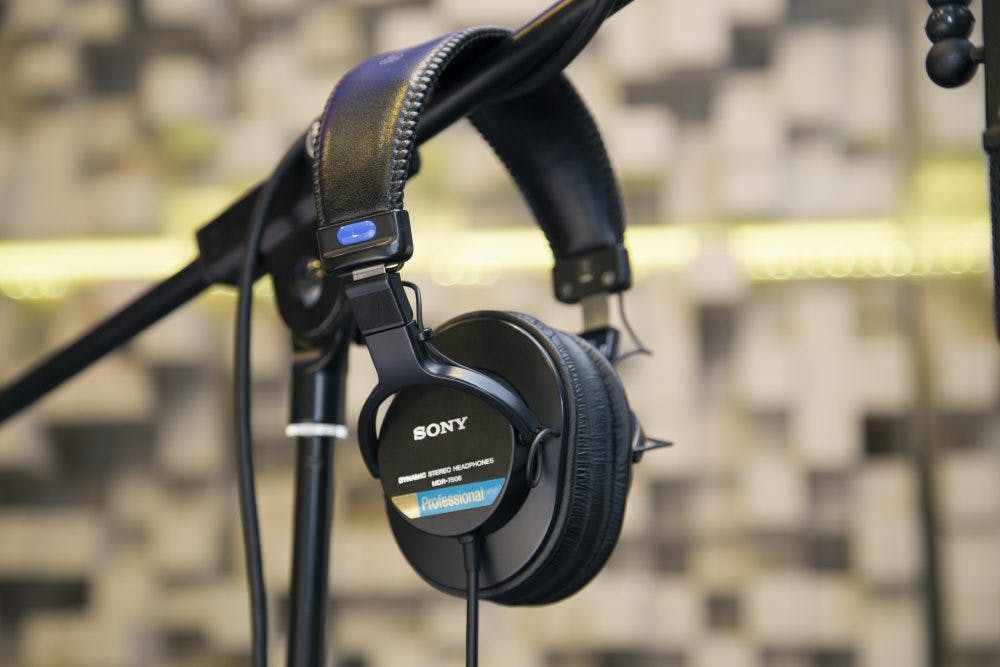
Sony MDR-7506 Reliability in 2025
This is the department where the MDR-7506’s age becomes apparent. While the Sennheiser HD 25, despite being nearly the same age, looks and feels fairly current, the MDR-7506 materials and design are unmistakably 80’s. However, the construction has proved itself sturdy across decades, and many professionals still swear by Sony MDR-7506 reliability in 2025.
The weakest points are well known:
-
Earpads – The stock pads tend to peel and flake within a year or two of heavy use. Fortunately, replacement options are plentiful. You can source official Sony pads, or opt for popular aftermarket choices from Dekoni, Brainwavz, or even budget sets on Amazon and eBay. Many engineers swap to velour or memory foam pads for both durability and comfort.
-
Headband & Hinges – The headband padding compresses over time, and the mostly plastic hinges can loosen with years of studio use. Still, with moderate care, they rarely fail outright.
-
Cable – The fixed, coiled cable is the biggest drawback. Once it frays or shorts out, you’ll need to solder in a new one or perform a detachable cable mod. DIY mod kits are widely available, and many users now upgrade to a detachable 3.5mm or mini-XLR connection for convenience.
As with many single-sided cable headphones, the internal wire that carries the signal across the headband is thin and partially exposed, making it a known vulnerability.
When compared to the nearly all-metal build of the Beyerdynamic DT 240 Pro, the Sony’s mostly plastic design feels generations apart. And given that the DT 240 Pro is about 20% less expensive than the MDR-7506, it highlights just how much of the Sony’s reputation rests on reliability, serviceability, and the vast ecosystem of replacement parts still available in 2025.
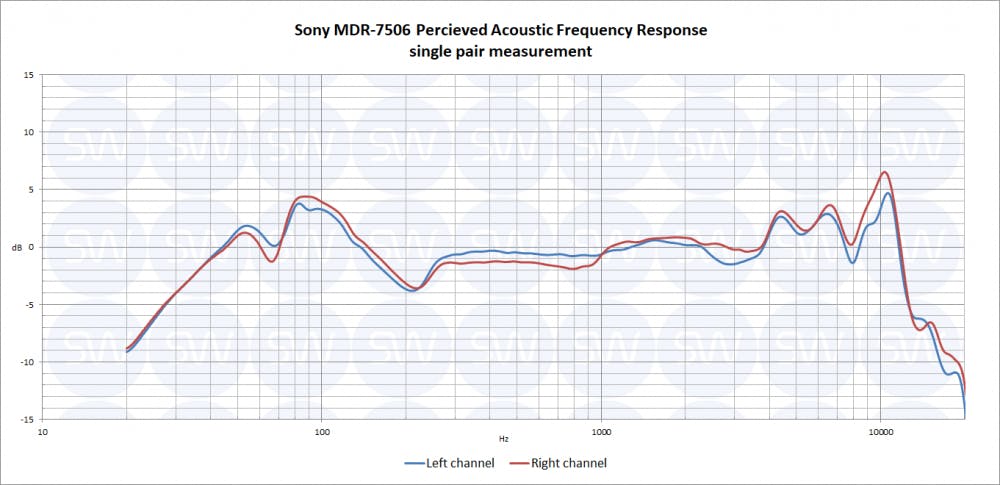
Over the years there have been plenty of engineers who have described the MDR-7506 sound as neutral. Despite the 100Hz and 4 – 10kHz boosts these classic Sony’s indeed are fairly flat, especially when compared to most of their rivals. MDR-7506 greatest strength is the consistent mid-range where no abrupt spikes nor dips are present, also the boosts on both ends are rather smooth, with very few resonances that are not particularly obtrusive. All these characteristics combined, form the predictable and neutral sound that they are famous for.
However, the sub-bass and especially the very top end (10kHz and up) are lacking. That wasn’t much of an issue in 1985, but today there’s plenty of genres where these drawbacks will be a major obstacle to delivering modern mixes and productions.
This is another characteristic that shows the MDR-7506 age. Left-to-right inconsistencies of 5dB in the lower spectrum are not uncommon. The same can’t be said for more modern rivals such as the DT 240 Pro or Audio-Techinca’s ATH-M20x and ATH-M40x.
Some issues may come up in the rest of the spectrum as well, however, they rarely cross the threshold of audibility.
Most of our testers find them to be very comfortable and suitable for long sessions. This might be one of the reasons that have helped MDR-7506 to stay popular for such a long time. Few testers reported pressure points and weren’t excited to wear them for extended periods, but the vast majority gave high praise to MDR-7506 in this category. Nevertheless, you should listen to no one when it comes to comfort and always try out headphones yourself as it’s highly subjective.
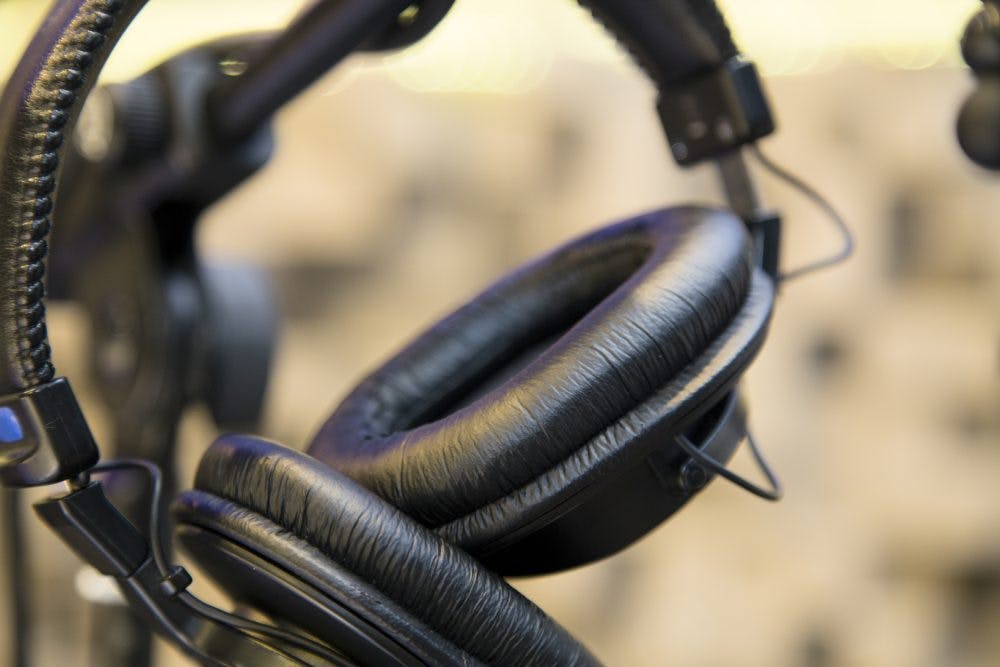
The channel balance problems drag the value rating down. For a high score here, they should cost about half of what they do now.
Audio-Technica ATH-M20x are somewhat similar in build quality but have a more neutral frequency response and you can get two of them for the price of one MDR-7506.
And once again I have to bring up the DT 240 Pro. While the Sonys are more neutral without calibration and on average our testers find them to be more comfortable, in all other aspects these Beyers are superior.

As the graph shows, the low end is not the cleanest. The high THD is dominated by the 3rd harmonic distortion, which is bad news. There are headphones with similar THD figures composed of 2nd harmonic distortion that cause no audible issues, but it’s not the case with MDR-7506. You don’t have to drive them especially loud to notice a subtle coloring added to the sub-bass, and, unfortunately, after calibration, this issue becomes even more prominent.
How accurate and consistent is the correction effect among different listeners?Adaptiveness is great for closed-back headphones and generally, these headphones will sound nearly the same for everyone, thus making them an adequate choice for collaboration (as long as you are lucky and get pairs without left-to-right channel inconsistencies).
How much do they differ pair to pair in terms of frequency response?MDR-7506 is not the worst offender in this department, but the consistency certainly is not the best. The largest spread among the pairs is in the lower part of the spectrum, from 200Hz down. Unfortunately, this means that the MDR-7506 bass response can be a few dB’s too much or not enough when used with the model average calibration profile.
Inconsistencies in the rest of the spectrum are not greater than its rivals and shouldn’t cause issues.
Rating
Conclusion
If Sony can find buyers for MDR-7506 even after 30 years since its release, clearly they must be doing something right? Or maybe the “industry standard” cult status of MDR-7506 is so deeply rooted that it doesn’t even matter if they’re still a good choice or not? Perhaps both statements hold some truth. MDR-7506 can still hold their own when it comes to comfort, but the drivers show their age. While their frequency response could be described as exceptionally neutral some time ago, nowadays some headphones offer flatter frequency response and way lower THD. Besides, the channel inconsistencies are more common than any of its rivals and the price is rather high for what MDR-7506 has to offer. However, regardless of their shortcomings, most find them easy to wear for long periods of time so they’re worth considering for use-cases where comfort plays a more important role than sound accuracy, i.e. broadcasting, podcasting, and some tracking.
FAQ: Sony MDR-7506 in 2025
Is the Sony MDR-7506 still reliable in 2025?
Yes. Despite being nearly 40 years old, the Sony MDR-7506 remains a reliable studio workhorse in 2025. The build is simple but proven, and with regular pad and cable replacements, these headphones can easily last for years of daily use. Many engineers still rely on them for tracking, editing, and live sound.
What mods fix the bass THD issue?
The MDR-7506 is known for higher total harmonic distortion (THD) in the bass range. The most effective fix is using SoundID Reference or EQ to roll off sub-80Hz frequencies slightly. Some users also swap pads for thicker aftermarket versions to improve the seal, or perform damping mods, but calibration remains the cleanest solution.
Sony MDR-7506 vs DT 240 Pro – which is more comfortable?
The Sony MDR-7506 is lightweight but has a tighter clamp and synthetic pads that can get warm during long sessions. The Beyerdynamic DT 240 Pro uses softer materials and modern cushion design, which many find more comfortable for all-day work. For short tracking sessions, the Sony holds up fine, but for marathon editing, the DT 240 Pro usually wins on comfort.
How does the MDR-7506 work with SoundID Reference calibration?
When loaded into SoundID Reference, the MDR-7506 shows a predictable calibration curve that smooths its mid-forward sound and controls bass roll-off. Calibration also helps reduce the perceived impact of THD in the low end. With correction applied, the MDR-7506 competes surprisingly well against newer studio headphones for critical mixing tasks.
Where can I buy MDR-7506 replacement parts in 2025?
Replacement parts are still widely available in 2025. Official Sony pads and cables can be sourced through authorized resellers, while aftermarket options from Dekoni, Brainwavz, and others are popular upgrades. Affordable earpad and cable kits are also sold on Amazon, eBay, and specialty pro audio shops, making the MDR-7506 easy to maintain for years to come.
Continue reading our review of Sony WH-1000XM3 here or explore the rest of our headphone reviews here.
You can also send in your Sony headphones for individual calibration. More details can be found here.
Final Rating
Calibration Enabled
Calibration
